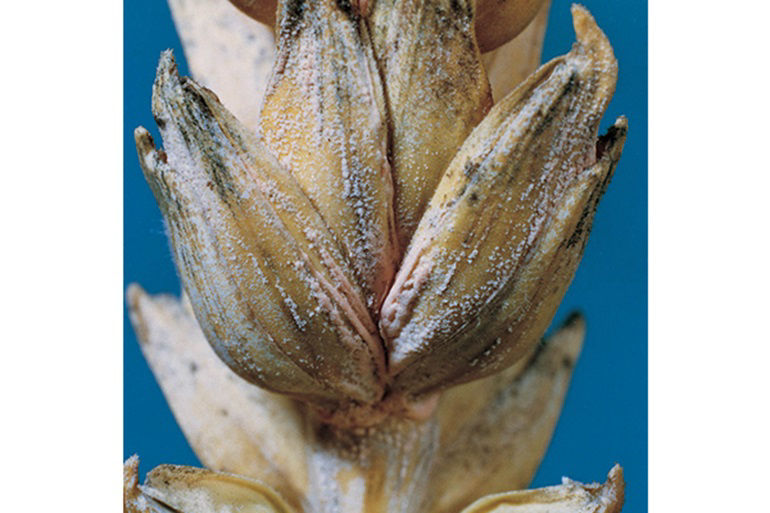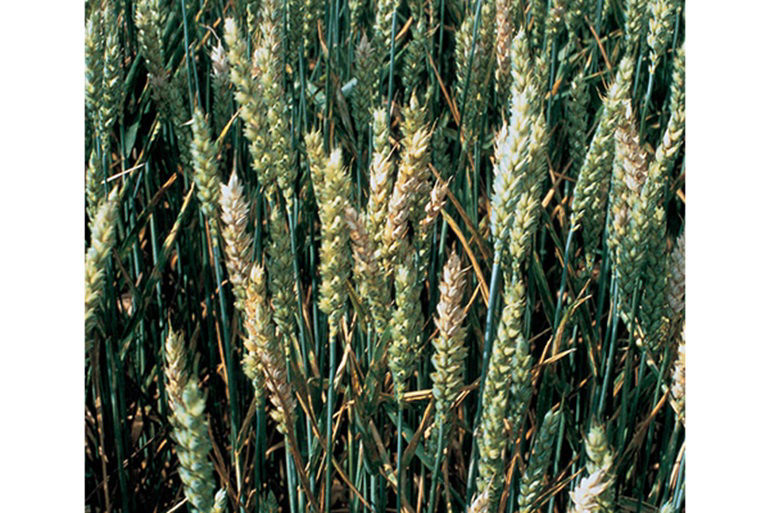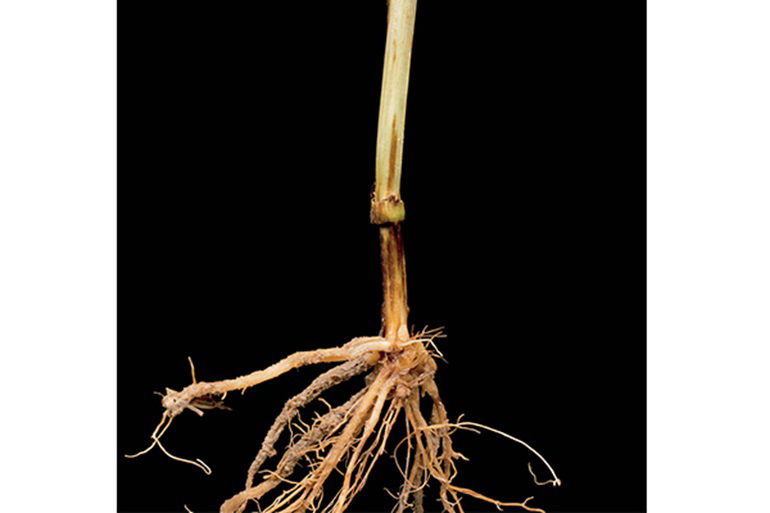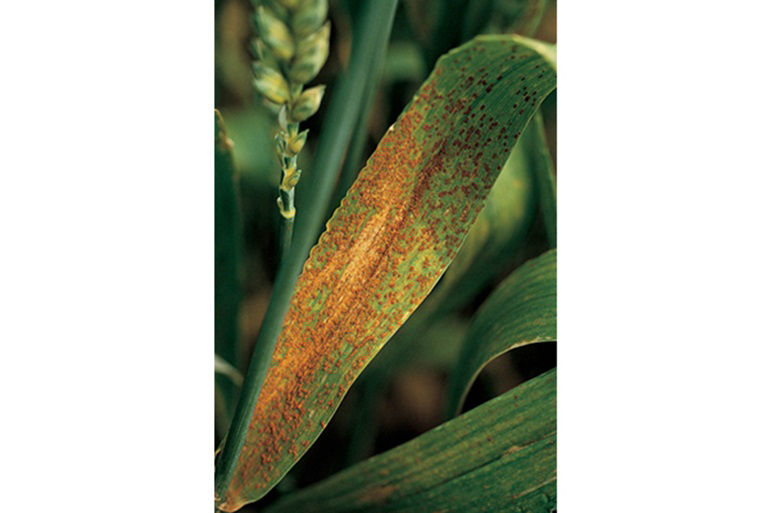Disease Management in Cereal Crops
January 8, 2020




Typically, it’s not possible to produce high yields in wheat and other cereal crops without paying attention to disease management. By following integrated pest management (IPM) practices, farmers have the opportunity to control and avoid many yield-robbing diseases.
Preplant Decisions Affect Diseases
It’s important to keep in mind that by the time seed is in the ground, significant decisions about preplant agronomic practices can influence disease management. Each of these decisions work together to influence which diseases may develop, the severity of infection and how it will affect crop yield and grain test weight.
That’s why spending time upfront to consider how to manage potential diseases can help enhance crop profitability. Another part of the disease management equation should include planning ahead for potential disease threats during the growing season.
Tillage/Crop Residue Management
Cultivation helps break down crop residue that harbors certain wheat diseases. Tillage is particularly helpful in geographies where continuous wheat is grown and can help reduce levels of some soilborne and foliar diseases caused by fungi. To effectively diminish crop residue, several tillage passes may be needed to break it up and bury it. Tillage does add fuel, labor and water conservation expenses and contributes to erosion; however, if farmers are planting into residue from soybeans, alfalfa, rye, oats or sunflower, tillage is not necessary. This is another benefit gained from crop rotation.
Nitrogen/Balanced Fertility
In areas where soft winter wheats are grown, balanced fertility may help control some diseases. Use lime to maintain a constant, optimum pH level in your soils. Overapplication of lime in the fall, however, can lead to excessive fall growth and contribute to infection and overwintering of pathogens, causing foliar disease.
It’s also well known that excess nitrogen can promote powdery mildew, leaf rust and leaf blotch. Excessive nitrogen in the spring, similar to excessive seeding rates, can create stands so lush that it creates lodging and high moisture under fallen plants, which promotes fungal diseases.
Variety Selection
Selecting seed varieties each growing season may be one of the most important decisions farmers make in managing diseases. Resistant varieties provide the best protection from diseases, yet not all varieties are resistant to all diseases. For this reason, experts recommend selecting two to three varieties with the highest level of resistance to diseases most commonly found on your farm and general area within your state. If you haven’t gathered historical disease data on your farm through scouting, consult your ag retailer, crop advisor, county Extension agent or your neighbors.
Planting multiple varieties is one way to diminish risk. A disease could inflict catastrophic problems on all of your wheat acres if only one variety is planted. Planting multiple varieties with different maturities also helps protect against the risk of certain diseases such as Fusarium head blight, also known as head scab, which often attacks when flowering coincides with warm, humid weather. By planting varieties with different maturities, not all of the wheat fields will flower at the same time, reducing the chance that all of your wheat will get hammered by scab.
Seed Treatments
Fungicide seed treatments provide economical risk insurance and protection against many diseases. Controlling diseases results in enhanced seed vigor and uniform stand emergence and staging, all of which may result in increased yield potential. Fungicide seed treatments can provide a healthy start for seedlings, especially in cool and damp spring conditions.
EverGol® Energy is a seed treatment fungicide from Bayer that promotes more root growth for faster crop establishment and controls seed and soilborne disease, such as Rhizoctonia. It features a combination of fungicides incorporating a complementary mode of action that supports resistance management.
Formulated with MD (micro-dispersion) technology, Raxil® Pro MD is a seed treatment fungicide that offers three modes of action against scab, smut, bunt and other diseases that threaten cereal seeds and seedlings, promoting the development of a robust plant. The result is the potential for a healthier crop capable of producing high performance.
Raxil® Pro Shield is a convenient all-in-one fungicide and insecticide seed treatment that provides advanced broad-spectrum disease control. In addition, Raxil Pro Shield seed treatment protects against pests like wireworms and aphids.
Crop Rotation
Crop rotation provides a means of reducing disease carryover into the growing season following wheat, barley and other crops. Rotating crops reduces risk from diseases such as head scab, tan spot, Stagnospora leaf blotch, Septoria leaf blotch and Pythium root rot. Remember that it’s important to keep watch against disease infection regardless of crop rotation, because some inocula are picked up and dispersed by wind.
Weed Control
Control of weeds serves as another beneficial IPM practice. Use tillage and/or herbicides to control volunteer wheat and other weeds.
Good weed control is important because weeds can become hosts to disease and reduce yields by competing with the wheat crop for water, sunlight, soil and nutrients. Volunteer wheat, for example, is a weed pest that can interfere with wheat production by allowing disease and insect pests to survive the period between crops. Weeds also hamper harvest, lower grain quality and result in dockage at the elevator.
Scouting
For effective and economical disease control, a commitment to early and frequent field scouting makes a big difference in identifying diseases before they become severe and rob yields. Yearly scouting also helps build a disease database in your fields so you can proactively manage disease in future crops. Many disease symptoms appear similar, and correct disease diagnosis is critical to determine the best control options.
For help with disease diagnosis, consult with your county Extension agent or crop advisor. Referring to a crop identification guide is also helpful.
Foliar Fungicides
Many diseases such as rusts, powdery mildew, Septoria leaf blotch and tan spot can be controlled by timely applications of labeled fungicides. The decision to apply fungicides should be based on disease prevalence, severity and whether the cost investment outweighs the potential yield loss and profitability.
At the least, the upper two leaves of the wheat plant should be protected from foliar disease, as that is where the photosynthate for grain fill is primarily generated. Grain fill requires photosynthesis unhampered by defoliation and foliar lesions caused by disease. For best effectiveness, good leaf coverage is a must whenever fungicides are applied.
A number of fungicides are available for both early- and late-season control of foliar diseases. Chemistries from two of the most commonly used classes of fungicides, triazoles and strobilurins, provide good-to-excellent activity against wheat leaf diseases. When used in conjunction with best management practices, they can help manage disease resistance. Wheat growers should consider fungicides with systemic movement and curative properties for the broadest protection from cereal foliar diseases. Strobilurin-containing products should not be applied after the flag leaf emergence to fields that might be threatened by scab infections, as this may lead to higher levels of mycotoxins, which will negatively impact grain quality.
With a combination of two active ingredients, Prosaro® fungicide provides excellent control of head diseases such as scab (Fusarium head blight). Additionally, Prosaro fungicide provides preventive and curative action against key cereal leaf diseases such as various types of rust, Septoria leaf blotch, tan spot, powdery mildew and glume blotch. It’s a good choice to ensure grain quality and enhance yield potential.
Always use full labeled rates of fungicides and read and follow label directions.
Plan to Manage Cereal Diseases
A well-thought-out disease-management program, including best management practices, proper seed protection and selection and fungicide applications, should be implemented to sustainably manage diseases.
For more information on wheat disease control options from Bayer, please contact your local Crop Science representative or visit the cereal section.
Before selecting a seed treatment or applying any fungicide, please read the entire label for the best possible results and to confirm that the product is effective on the disease you need to control. Not every product is suitable for every situation, and correct application technique will ensure the best results.
Read More About Disease Control
ALWAYS READ AND FOLLOW PESTICIDE LABEL DIRECTIONS. Not all products are registered in all states and may be subject to use restrictions. The distribution, sale, or use of an unregistered pesticide is a violation of federal and/or state law and is strictly prohibited. Check with your local dealer or representative for the product registration status in your state. Bayer, Bayer Cross, Evergol®, Prosaro® and Raxil® are registered trademarks of Bayer Group. For additional product information call toll-free 1-866-99-BAYER (1-866-992-2937) or visit our website at www.BayerCropScience.us. Bayer CropScience LP, 800 North Lindbergh Boulevard, St. Louis, MO 63167. ©2019 Bayer Group. All rights reserved.